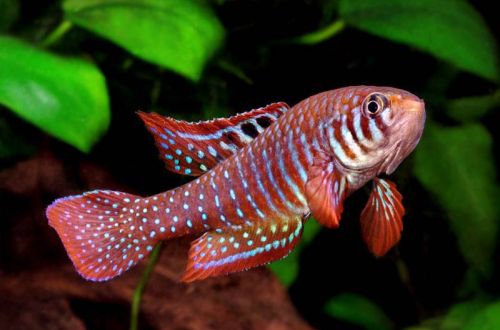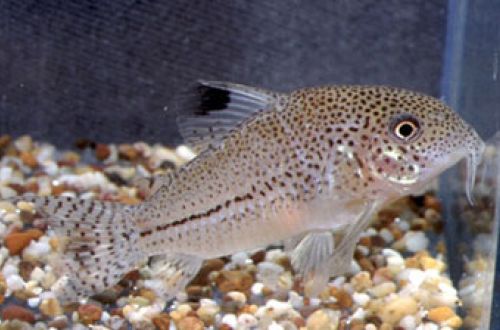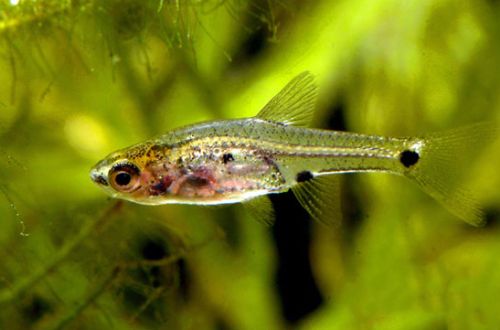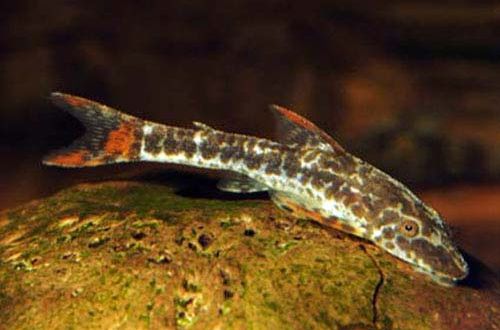
Simpsonichthys Santanyi
Simpsonichthys Santana, scientific name Simpsonichthys santanae, belongs to the family Rivulidae (Rivulovye). Simpsonichthys are close relatives of Notobranchius living on another continent (Africa), which manifests itself in almost all aspects – from appearance to breeding characteristics. Differences are only in a calmer disposition.

Contents
Habitat
The fish comes from South America from the Parana River basin, in particular from the Santana River, after which it was named. It inhabits small shallow tributaries with a depth of no more than 20 cm. The natural habitat is subject to seasonal changes due to the alternation of dry and rainy periods. The water level can vary greatly up to the temporary drying up of the reservoir.
Brief information:
- The volume of the aquarium – from 40 liters.
- Temperature – 20-25°C
- Value pH — 6.0–7.0
- Water hardness – soft (4-10 dGH)
- Substrate type – dark soft
- Lighting – subdued
- Brackish water – no
- Water movement – little or no
- The size of the fish is about 3 cm.
- Nutrition – any food rich in protein
- Compatibility – peaceful, prefer to be in mixed groups
Description
Adults reach a length of about 3 cm. The fish have a slightly raised back, creating a feeling of hunchback. The tail is rounded, dorsal and anal fins are pointed. Males are painted red with rows of blue speckles, turning into vertical stripes in the front of the body. The fins are colored in body color with a pattern of blue spots. Females look less colorful. The main color is pale yellow with rows of gray stripes. The fins are colorless and monochromatic.
Food
The basis of the diet should be live or frozen food from artemia, bloodworms, daphnia and similar products. Some breeders are accustomed to dry food rich in protein.
Maintenance and care, arrangement of the aquarium
The optimal aquarium size for a mixed group of 3-5 fish starts at 40 liters. With long-term maintenance, it is important to ensure a stable aquatic environment in an acceptable range of temperatures and values of hydrochemical parameters. The design should provide places for shelters in the form of thickets of plants, snags and other natural or artificial decor. Santana’s Simpsonichthys can jump out of the aquarium, floating plants can be placed on the surface to prevent this. They will not only become an obstacle to jumping, but will also additionally obscure the aquarium. It is noted that bright light negatively affects the color of fish.
Behavior and Compatibility
Males are territorial and tend to defend their area of the aquarium from rivals. However, skirmishes are demonstrative in nature, which allows several males to be even in a small tank. Females are peaceful and calmly relate to relatives. Compatible with many miniature non-aggressive species such as tetras.
Breeding / breeding
Breeding Simpsonichthys is considered a rather difficult process due to their specific breeding. In nature, reproduction occurs at the end of the wet period with the approach of drought. Fish lay their eggs in a layer of soil. When the reservoir dries up, the fertilized eggs remain in a layer of semi-dry substrate, where they will stay for several months. With the first rains fry appear.
A home aquarium will need to replicate these seasonal environmental changes. As a spawning substrate, specially prepared fibrous peat, coconut fibers or artificial substitutes are used. The material used should be easy to remove from the aquarium and retain water. When eggs are seen on the surface, the substrate is carefully removed, slightly squeezed and dried on paper towels at room temperature for 2-3 hours. Then the soil is placed in a plastic bag tied with an elastic band, or a plastic closed container. In this state, it is stored in a dark place at a temperature of 26 ° C. The incubation period lasts 11 weeks, then the soil is removed, placed in a container and filled with soft water at a temperature of 23–24 ° C. After about an hour, the first fry should appear.
Fish diseases
Hardy and unpretentious fish. Diseases manifest themselves only with a significant deterioration in the conditions of detention. In a balanced ecosystem, health problems usually do not occur. For more information on symptoms and treatments, see the Aquarium Fish Diseases section.





